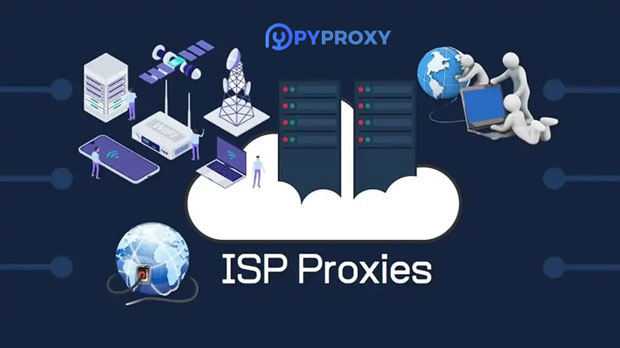SOCKS5 is a versatile proxy protocol that has gained popularity for its ability to provide secure and anonymous internet browsing. When used in conjunction with proxy servers, SOCKS5 enhances privacy and allows for efficient data handling, which is why it’s widely used for activities that demand speed and security, such as browsing, torrenting, and accessing geo-restricted content. In high-demand environments, optimizing the concurrent connections of a socks5 proxy server is crucial for ensuring maximum performance. By fine-tuning concurrent connections, users can achieve faster browsing speeds, reduced latency, and an overall more stable connection. Understanding SOCKS5 ProtocolSOCKS5, short for "Socket Secure version 5," is a proxy protocol that facilitates secure and private communication between users and the internet. Unlike its predecessors, SOCKS4 and SOCKS4a, SOCKS5 offers several enhanced features, including support for both UDP and TCP traffic, enhanced authentication methods, and improved security protocols. A socks5 proxy server essentially acts as an intermediary between the user and the destination server, routing all data requests through the proxy. This process hides the user's IP address and encrypts data, thus ensuring anonymity and security. In high-traffic environments, the ability to handle multiple concurrent connections efficiently is vital to maintaining optimal speed and performance.The Role of Concurrent Connections in Proxy OptimizationConcurrent connections refer to the ability of a proxy server to handle multiple requests at the same time without degrading performance. For sock s5 proxies, optimizing these concurrent connections plays a crucial role in maximizing the performance of internet activities, particularly for users who need to perform resource-heavy tasks like streaming, gaming, or large-scale data scraping.Without proper optimization, the proxy server may struggle to handle multiple connections simultaneously, leading to higher latency, slower connection speeds, or even connection drops. Therefore, ensuring that the proxy server can efficiently manage high numbers of concurrent connections is key to maintaining a seamless user experience.Key Techniques for Optimizing Concurrent Connections1. Load Balancing and DistributionOne of the most effective ways to optimize concurrent connections is through load balancing. Load balancing involves distributing incoming connections across multiple servers to ensure that no single server is overloaded with too many requests. By spreading the traffic across various proxy servers, the system can handle more concurrent connections and improve overall performance.For SOCKS5 proxies, this can be achieved by implementing a proxy network with multiple servers across various geographic locations. Load balancing software can then be used to automatically distribute the traffic in a manner that optimizes performance and reduces the likelihood of server overloads.2. Increasing Server CapacityAnother way to improve concurrent connection handling is by increasing the capacity of the proxy server. This can be done by upgrading the hardware (e.g., adding more RAM, faster processors, or higher bandwidth) to allow the server to process more requests at once.Additionally, server-side optimizations such as refining the server's connection handling protocols can help it manage a larger number of concurrent users. Servers that have high processing power and optimized software can effectively handle a higher number of concurrent connections, reducing latency and improving connection stability.3. Using Connection PoolingConnection pooling is a technique that involves creating a pool of reusable connections that can be shared among multiple clients. Rather than establishing a new connection for every request, connection pooling allows the server to reuse existing connections, reducing the overhead of establishing new ones and improving response times.In a SOCKS5 proxy, using connection pooling can help manage high levels of traffic efficiently. By reusing established connections, the proxy server can handle a higher number of requests without putting additional strain on system resources.4. Optimizing Connection Timeout SettingsTimeout settings are an important aspect of managing concurrent connections. When a client is unable to establish a connection within a specified time frame, the connection attempt is terminated. Optimizing timeout settings ensures that connections are not left open indefinitely, which can lead to server congestion.By setting reasonable timeout thresholds, proxy servers can free up resources faster, allowing them to handle new connections more efficiently. Fine-tuning these settings based on traffic patterns and user behavior is essential for optimizing performance.5. Efficient Traffic ShapingTraffic shaping refers to the practice of prioritizing certain types of traffic to ensure that high-priority tasks (e.g., streaming, gaming) receive the necessary bandwidth. In the context of SOCKS5 proxy optimization, traffic shaping can help ensure that essential services do not experience delays due to excessive concurrent connections from less critical applications.By implementing intelligent traffic shaping algorithms, proxy servers can allocate bandwidth dynamically, ensuring that high-priority traffic is processed efficiently, even when many users are connected simultaneously.Best Practices for Maintaining Optimal Proxy Performance1. Monitor Proxy Performance RegularlyRegular monitoring is crucial for maintaining optimal performance in any proxy server environment. By tracking key metrics such as response time, server load, and the number of active connections, administrators can identify performance bottlenecks and take corrective action before they impact the user experience.Using performance monitoring tools can help administrators identify potential issues and adjust the proxy configuration accordingly to maintain an optimal balance between speed, security, and concurrency.2. Implement Redundancy for FailoverTo ensure uninterrupted service, it's vital to implement redundancy strategies for failover protection. This involves setting up backup proxy servers that can automatically take over in case of failure or overload. Failover systems help ensure that users can continue their browsing or other activities without noticeable interruptions, even if the primary server becomes unavailable due to excessive concurrent connections.3. Regularly Update Proxy SoftwareSoftware updates are an essential part of keeping proxy servers running efficiently. Developers frequently release updates to improve the performance, security, and functionality of proxy software. By ensuring that your SOCKS5 proxy is running the latest version, you can benefit from optimizations that may improve how the server handles concurrent connections.ConclusionOptimizing concurrent connections for SOCKS5 proxies is crucial for ensuring that users experience fast, stable, and secure internet browsing. By employing techniques such as load balancing, increasing server capacity, using connection pooling, and prioritizing traffic, proxy administrators can maintain high levels of performance, even in high-demand environments. Regular monitoring, redundancy, and software updates are also key to ensuring long-term proxy stability. By following these best practices, businesses and individuals can ensure that their SOCKS5 proxies provide the best possible experience for all users, regardless of the number of concurrent connections.
Jun 23, 2025


































































